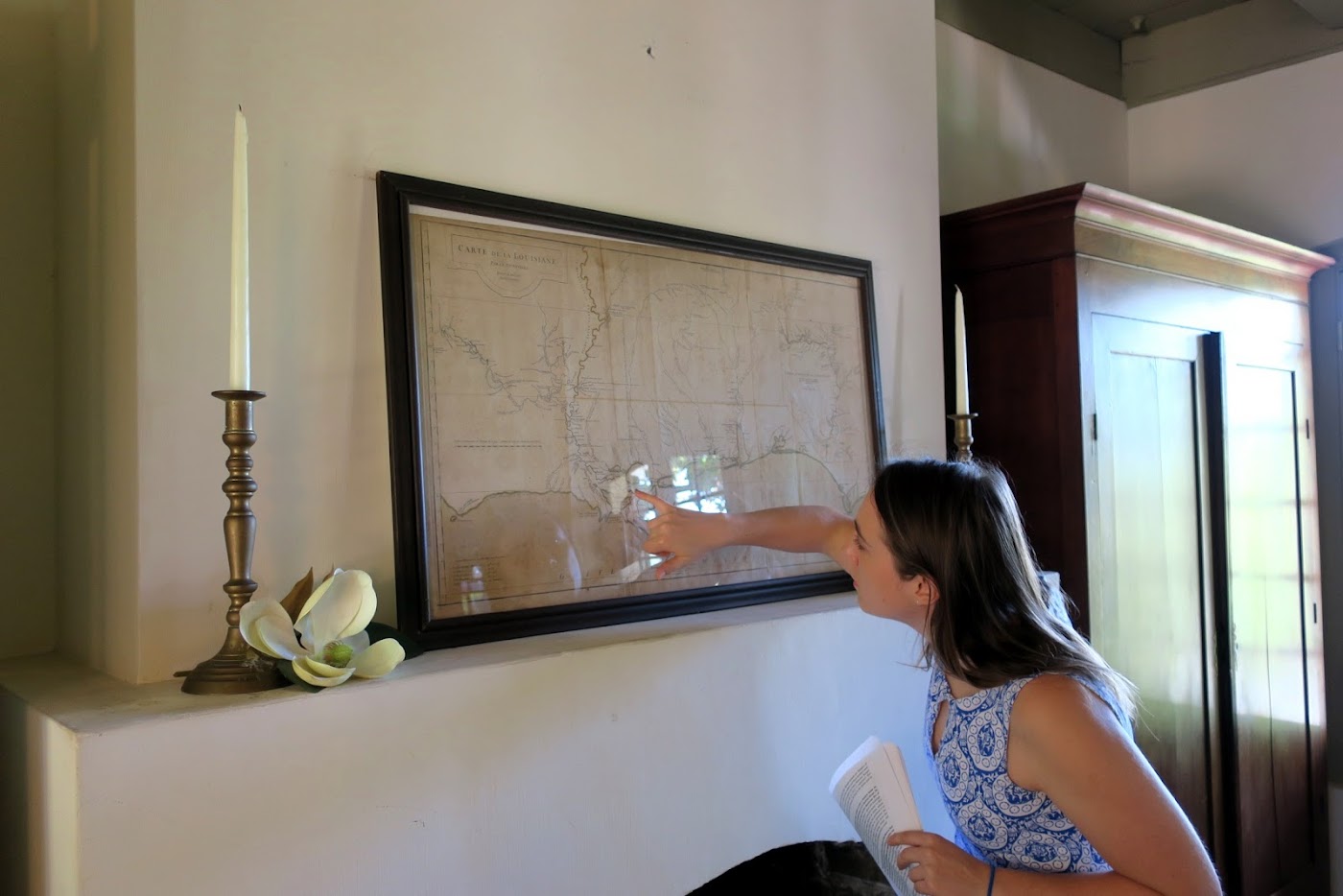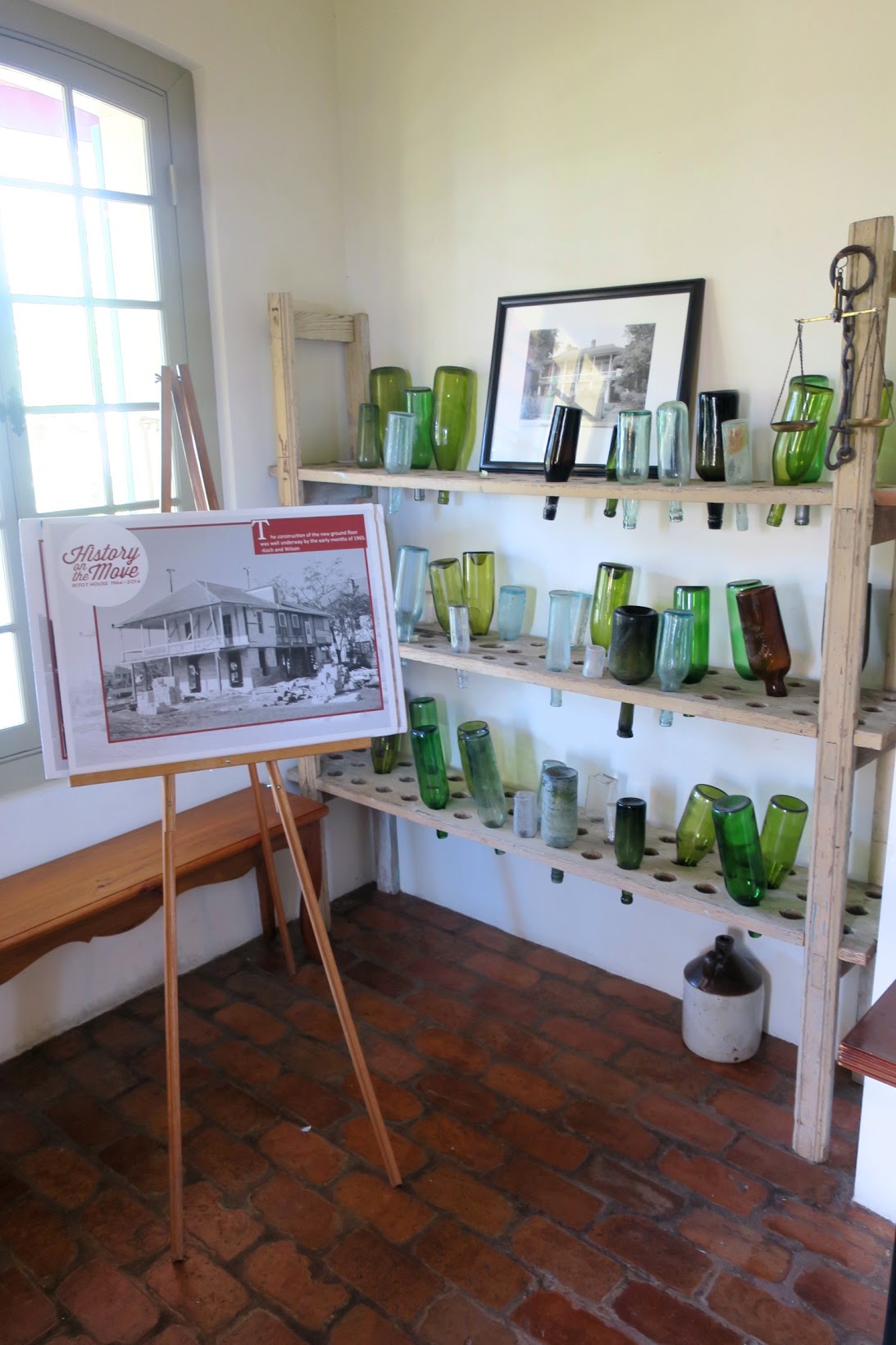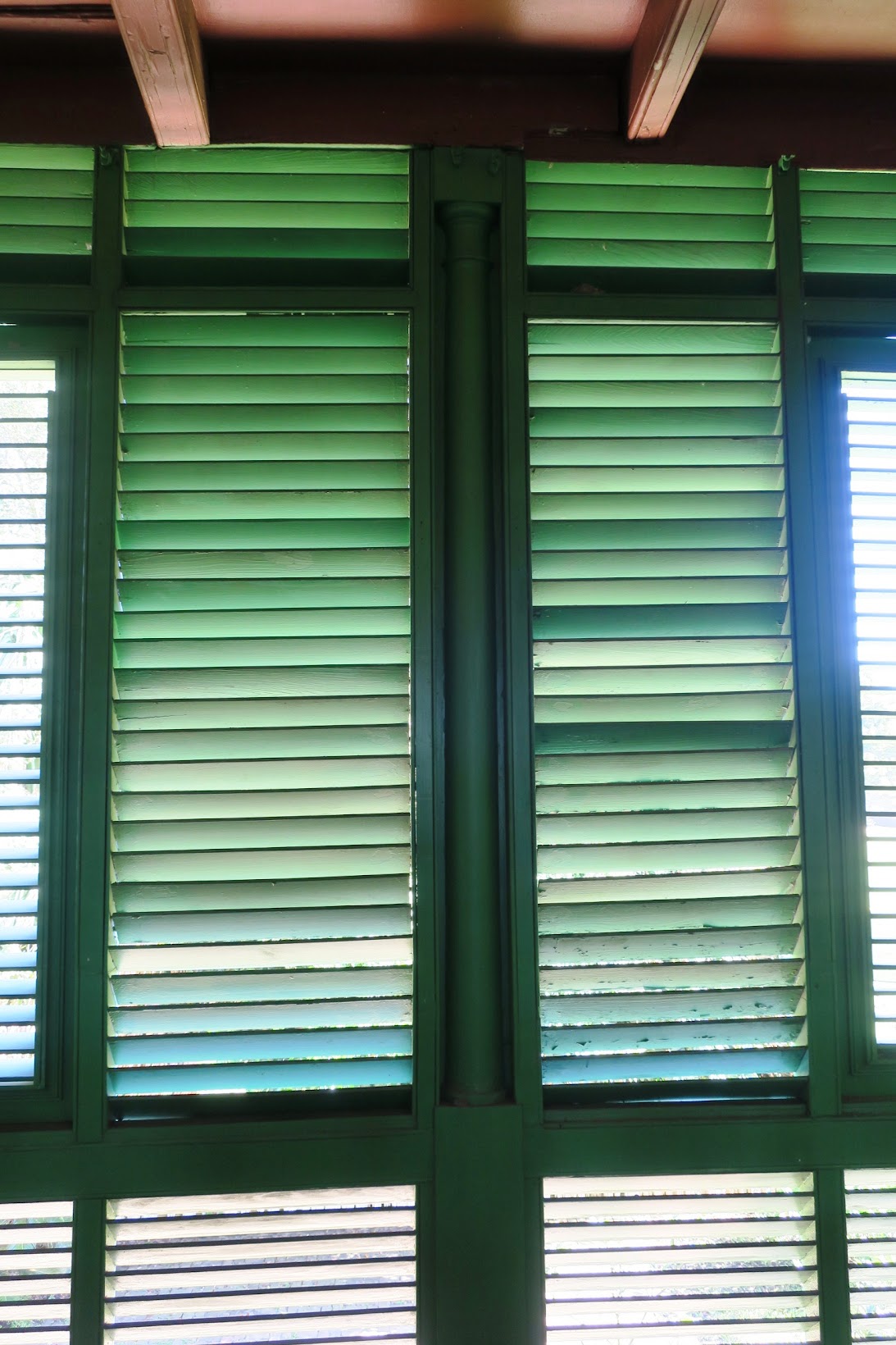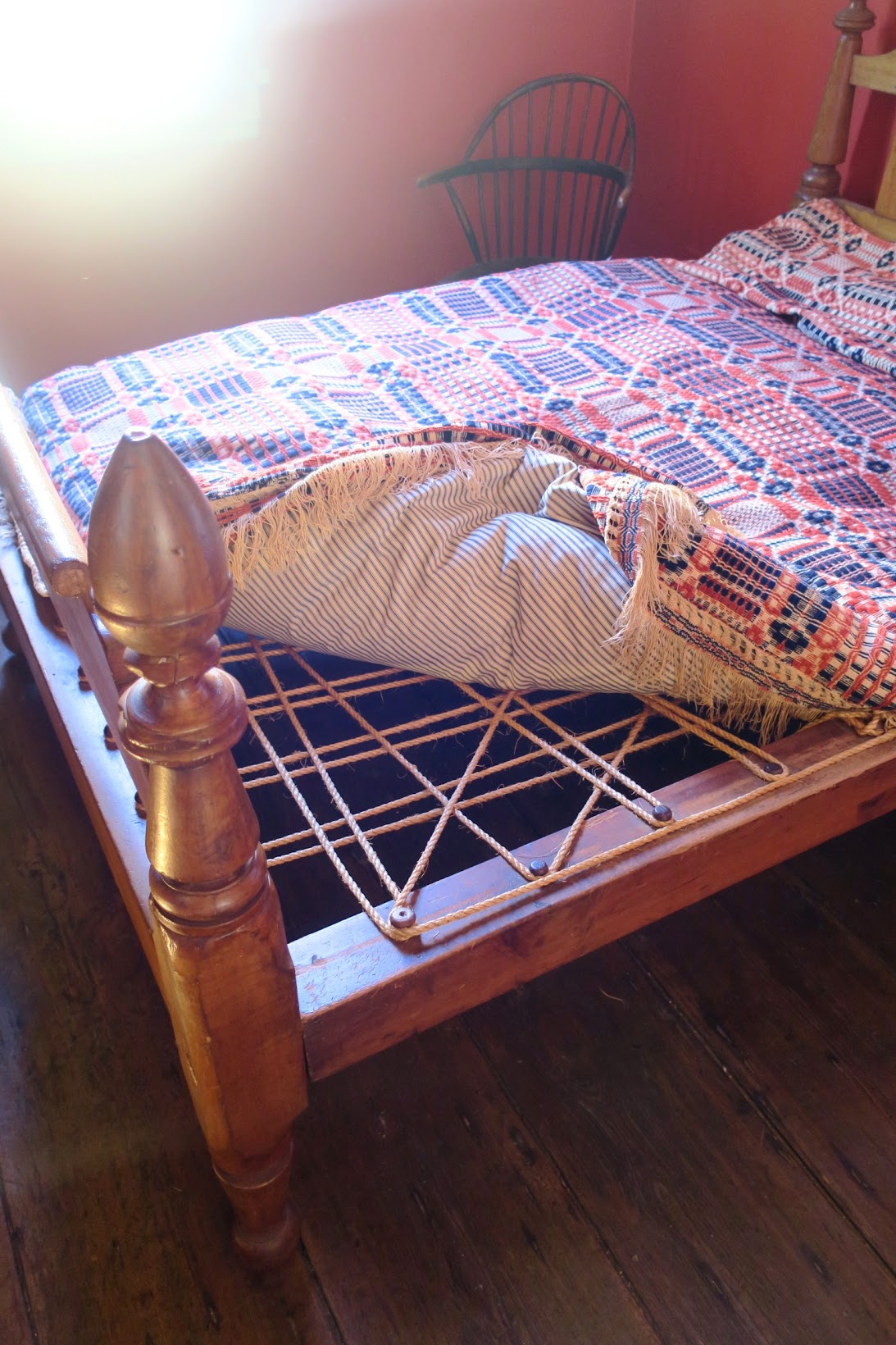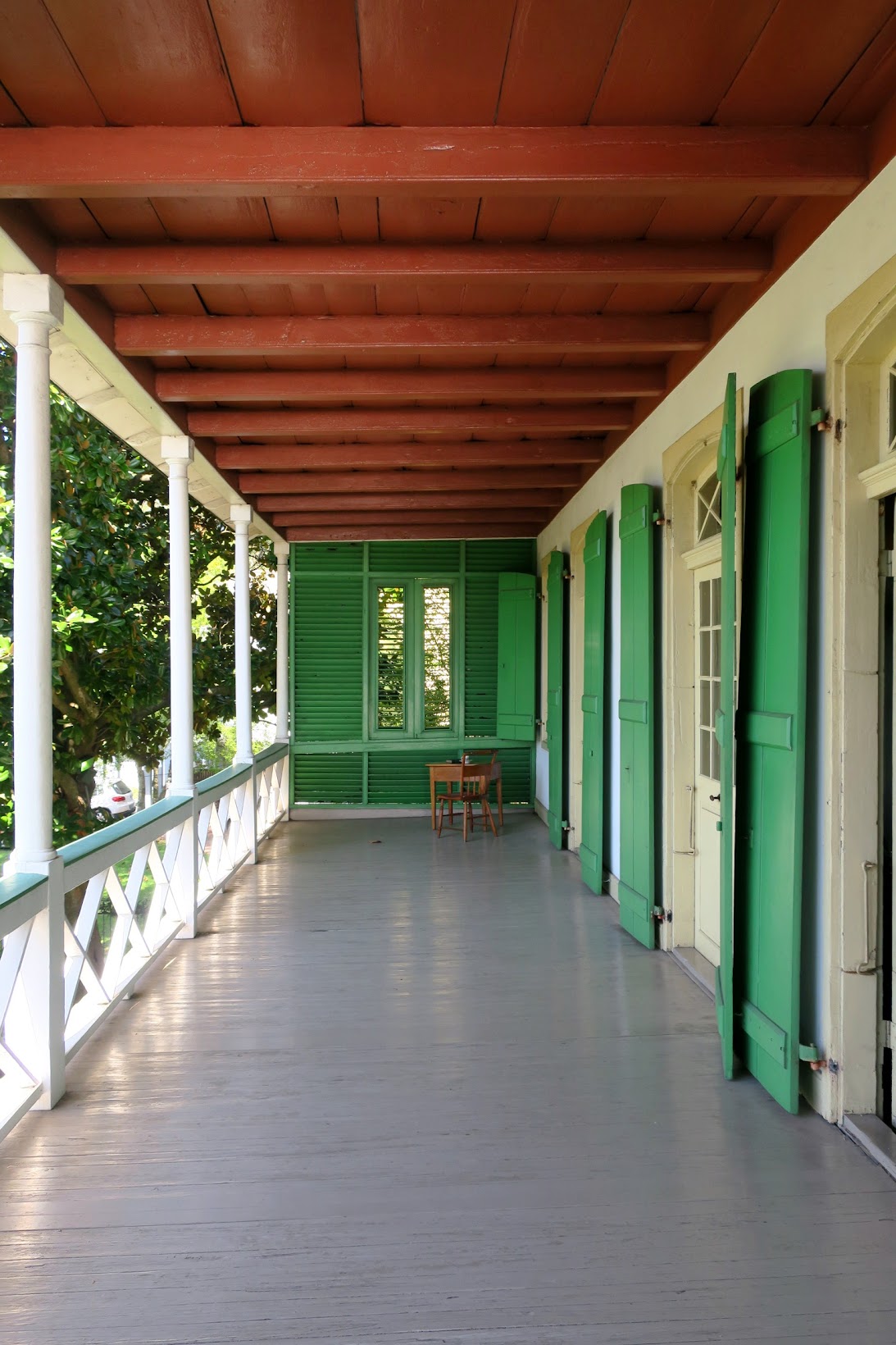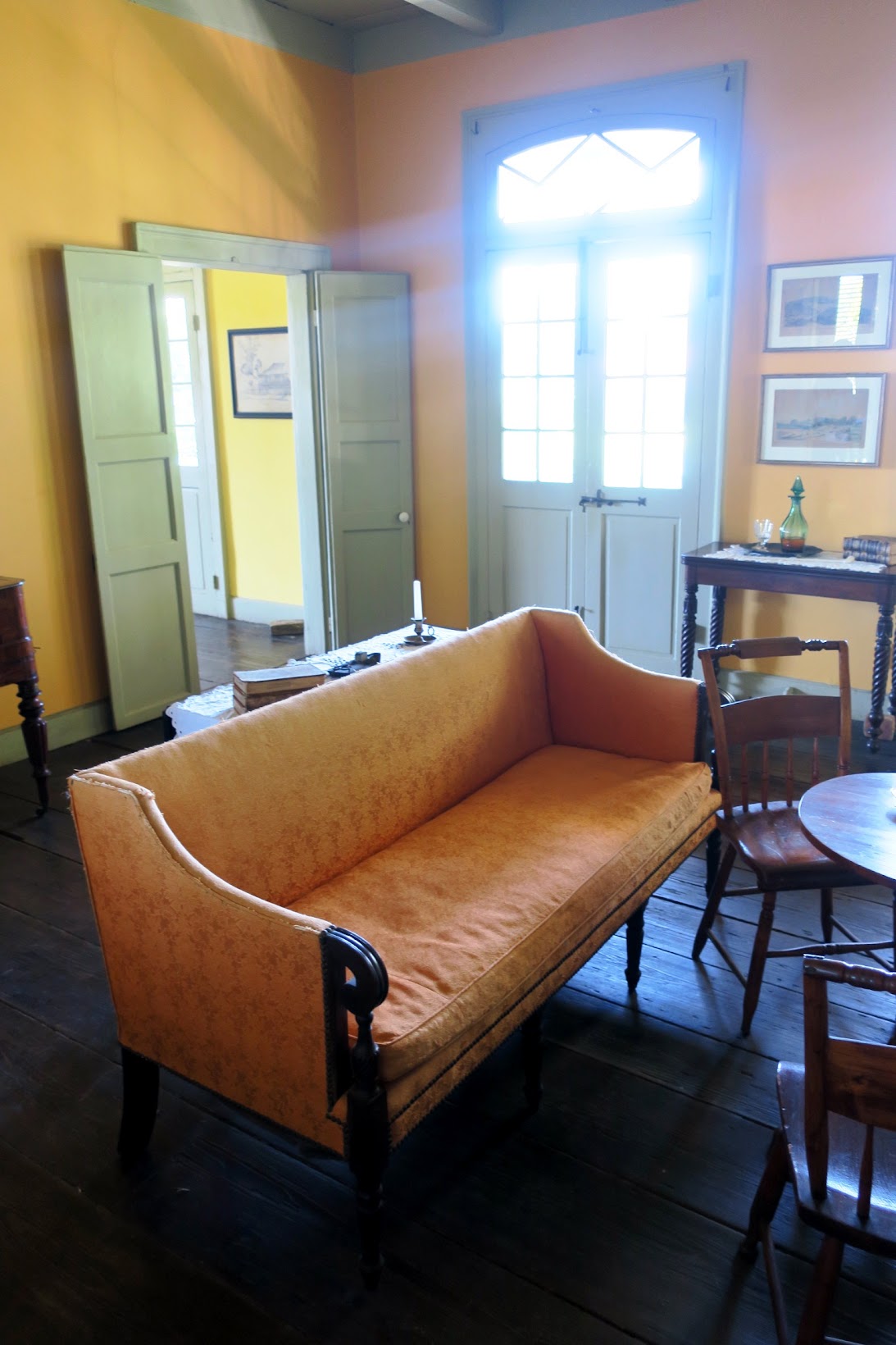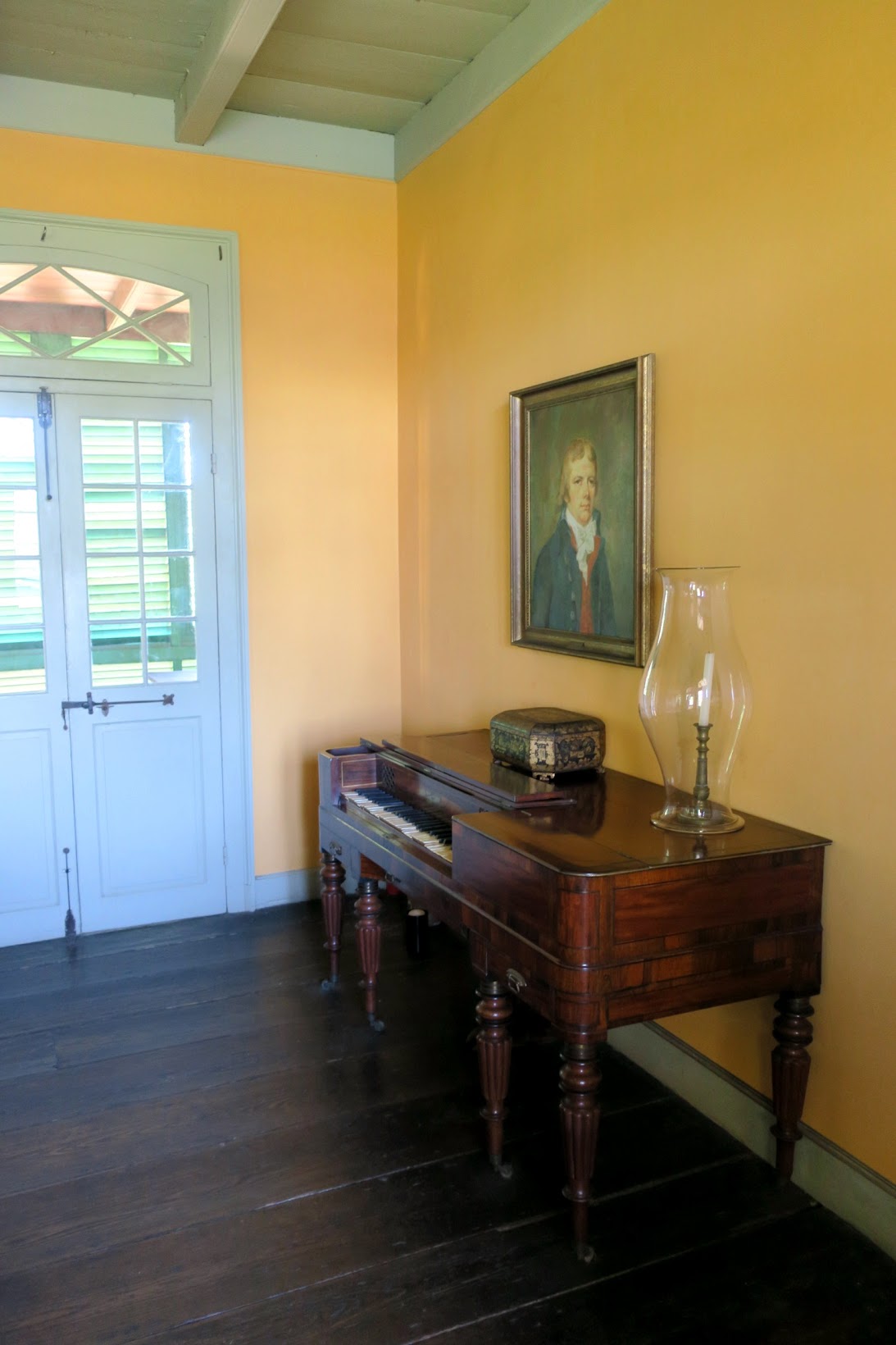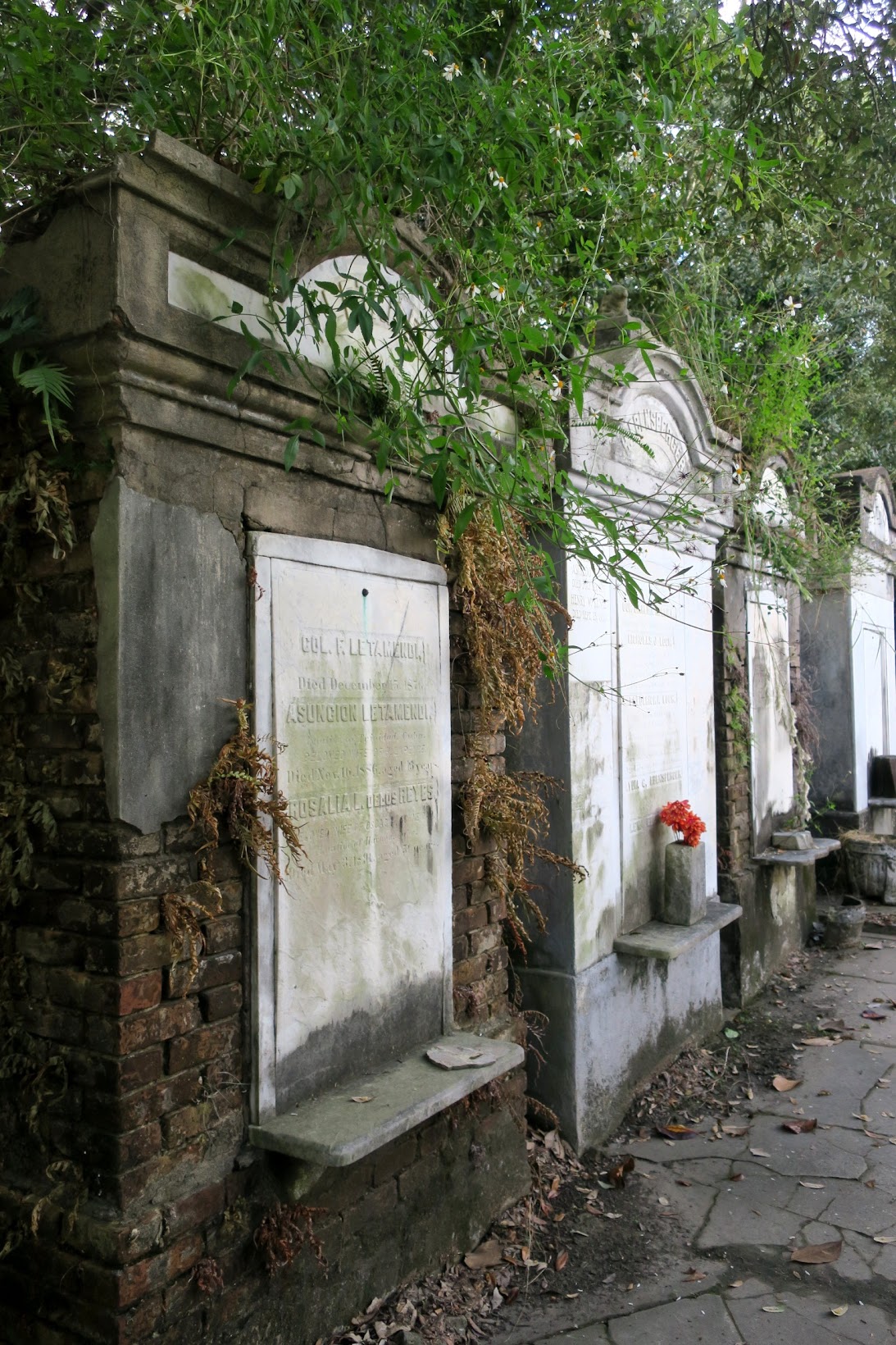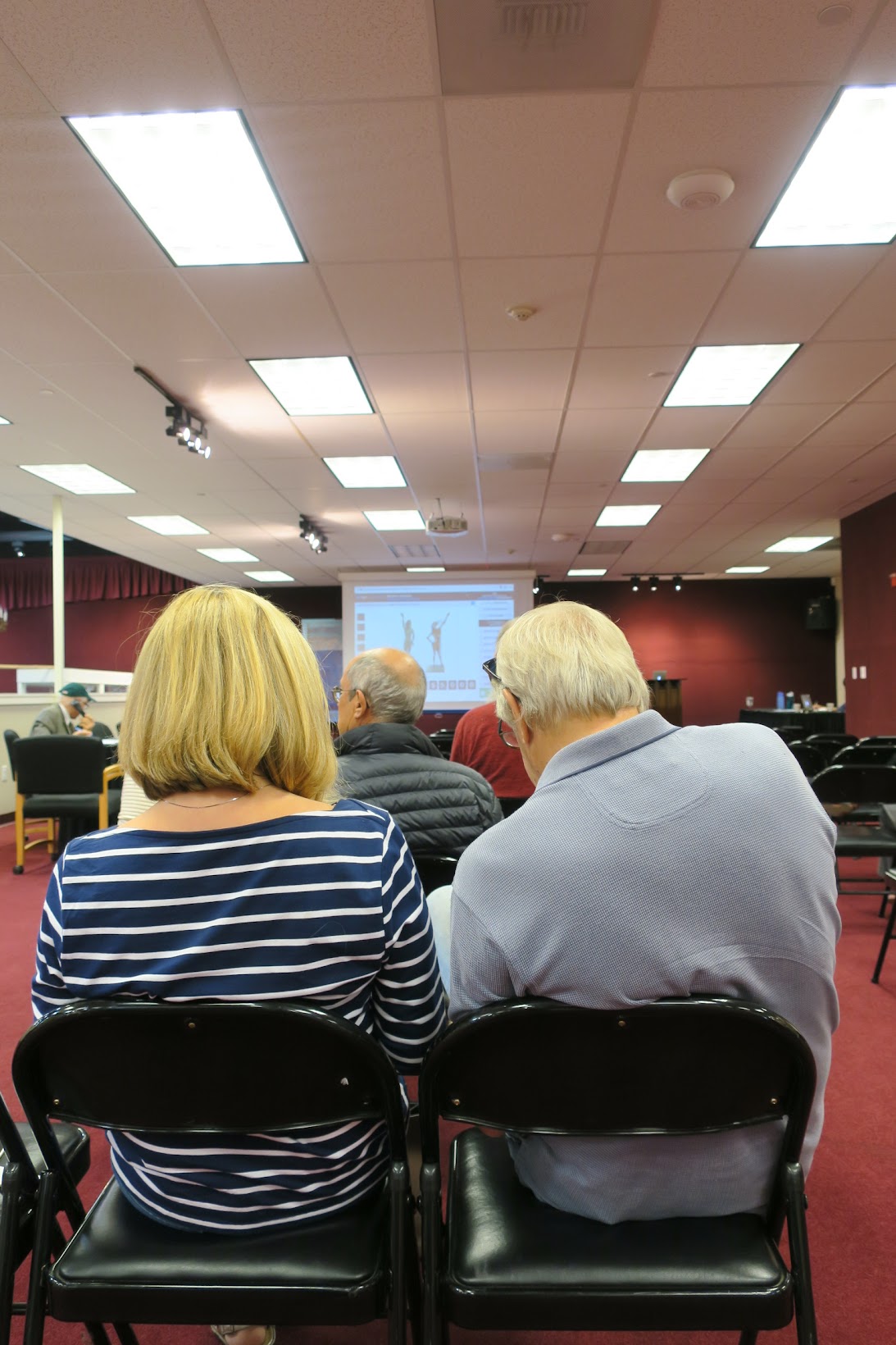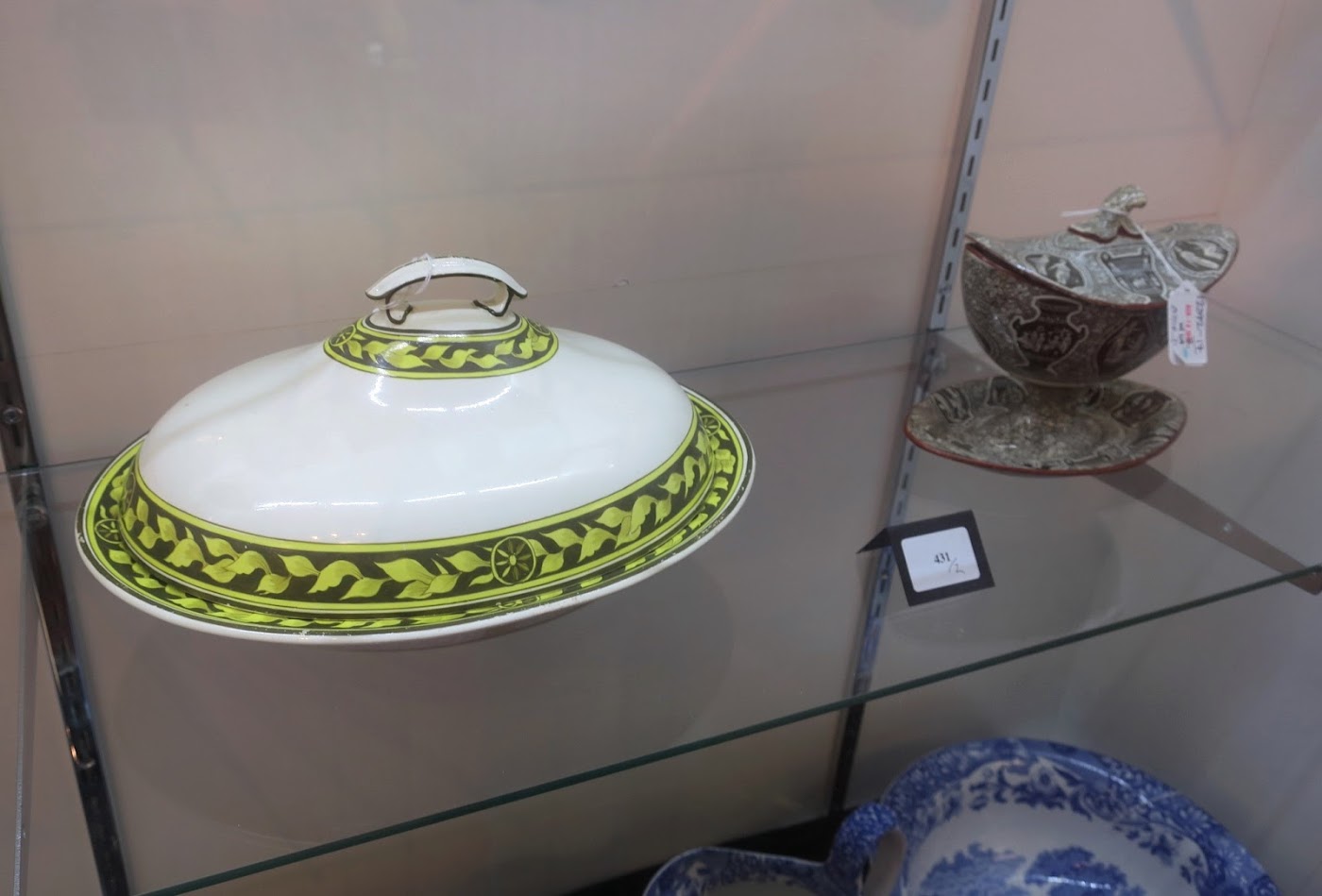Pitot House was designed by architect and builder Hilaire Boutté in 1799
Photo: Chronica Domus
Photo: Chronica Domus
Of all the historic house museums located in New Orleans, it was Pitot House that I was most looking forward to visiting. Perhaps not such an obvious choice for most visitors of this fair city - a streetcar up to City Park will take you there from the French Quarter - it was a house I had longed to see for myself. I first read about Pitot House in Vance Muse's 'Old New Orleans, Great American Homes', a book I discovered at a public library early in the 1990s when I first arrived on these shores from England. A copy of the book now sits on the shelves of my own library.
Photo: Chronica Domus
What drew me to Pitot House was the fact that it looks like no other dwelling I have stumbled across in my new country of residence. Certainly, one would expect to see such houses in the tropical climes of the West Indies, but here in America? With its stucco-covered brick and post construction, wide loggia, colonnettes, shutters, and cooling brick floors, this house happens to be perfectly suited to New Orleans' subtropical humid weather.
Although Pitot House is not a grand house, having been built as a family home - it's first resident, Madame Rillieux, was Edgar Degas' maternal great-grandmother - its intimate scale and architectural vernacular make it an endearing one. Sitting prettily within its lush gardens along the banks of picturesque Bayou St. John, one could happily spend hours sitting idly on the gallery, gazing out at the watery view, or passing the time downstairs picking grapefruits from the garden, or perhaps clipping flowers to bring indoors. Someone, please, wake me up, I have a blog post to write!
Photo: Chronica Domus
The garden is delineated from the street by rugged old cypress pieux fencing, seen in the first photograph of this post. Cypress wood is often referred to in these parts as 'eternal wood' because of its rot-resistant qualities. It does, after all, grow submerged within the swampy environs of the bayou. Brick walkways, citrus trees, Amethyst beautyberry, as well as a host of other shrubs and trees (Cypress and Magnolia specimens) happily co-exist in the well-tended garden.
Brick paths beckon one to explore the lush gardens
Photo: Chronica Domus
Photo: Chronica Domus
Built as a country retreat in 1799 on a thirty acre plot of land, Pitot House is the only Creole colonial country house open to the public in New Orleans. James Pitot and his family lived there from 1810 to 1819. He was the first mayor of the newly incorporated American city of New Orleans.
Our guide, Ms. Hallie Borstel, points out the position of Pitot House in relation
to New Orleans on an old map of Louisiana above the fireplace in the dining room
Photo: Chronica Domus
In 1963 Pitot House was moved two-hundred feet east to its present location in an effort to save it from demolition by the Louisiana Landmarks Society. Since then, the society has done an admirable job of restoring and preserving the house and its grounds for the visiting public to enjoy.
Here's an image of the house in 1965 in the midst of reconstruction
(notice the dormer windows in the roof, now removed, features not original to the house)
Photo: Chronica Domus
(notice the dormer windows in the roof, now removed, features not original to the house)
Photo: Chronica Domus
Throughout the house are dozens of french doors and windows that catch the cross-breezes when opened, helping to cool the house and its occupants.
Photo: Chronica Domus
The brick-floored rooms and 'cabinets' on the ground floor of Pitot House are multi-purpose rooms where furniture would be moved around according to the family's needs. The rooms were also used for storage.
Photo: Chronica Domus
There are no hallways in the house (upstairs one can come and go between rooms using the French doors on the gallery) and the only starcase in the house is located outside.
The photograph above shows the French door that leads into a small bedroom. The room is modestly furnished with an armoire, a few chairs, and a bed.
There are no hallways in the house (upstairs one can come and go between rooms using the French doors on the gallery) and the only starcase in the house is located outside.
I love how the handrail curves on this outdoor staircase
Photo: Chronica Domus
Photo: Chronica Domus
Let's look around upstairs
Photo: Chronica Domus
Photo: Chronica Domus
Ascending the staircase one lands at the shuttered gallery. I loved the colonnettes between the shutters, a detail I don't recall seeing anywhere else prior to my visit to Pitot House.
The photograph above shows the French door that leads into a small bedroom. The room is modestly furnished with an armoire, a few chairs, and a bed.
Photo: Chronica Domus
Beneath the bedspread is a Spanish-moss stuffed mattress that rests upon a rope bed
Photo: Chronica Domus
Another bedroom in the house is set up as the family had it during the hot summer months. The headboard has been removed and the bed sits forward of the wall to allow for air circulation. The gauzy canopy helps keep the insects at bay. Vetiver, a natural insect repellant, was also employed.
This bedroom is set up for the summer season where mosquitoes and insects are at their worst
Photo: Chronica Domus
Photo: Chronica Domus
The view from the upstairs gallery which overlooks Bayou St. John
Photo: Chronica Domus
The French doors on the gallery are used to gain access into and egress from the upstairs rooms
Photo: Chronica Domus
A portrait of Genevieve-Sophie Pitot hangs over the bedroom fireplace
Photo: Chronica Domus
I highly encourage visitors to New Orleans - too many of whom never explore much beyond the French Quarter - to ride the streetcar up to City Park and walk the few minutes it takes to reach Pitot House. A tour of this Creole country abode set upon the waters of picturesque Bayou St. John is a real treat indeed and could, possibly, be the highlight of their visit to New Orleans. It certainly was for me.
Pitot House is located at 1440, Moss Street, New Orleans, LA 70119. Please check the website for opening hours.
Nota bene: I am neither paid nor do I receive recompense in exchange for applauding products or services within my blog. I do so because I enjoy them. If you are a kindred spirit, you too enjoy recommending nice things to fellow good eggs.
Photo: Chronica Domus
Photo: Chronica Domus
By far the most formal room in the house is the parlor where James Pitot and his family entertained visiting dignitaries, friends, writers, and polititians.
Pitot favored American Federal furniture when furnishing the rooms of Pitot House
Photo: Chronica Domus
Photo: Chronica Domus
One of the few imported pieces in the house is this French pianoforte, a belated wedding
present to Genevieve-Sophie, Mr. Pitot's second wife (the first, Marie-Jeanne, died during
childbirth) - the portrait is of James Pitot
Photo: Chronica Domus
The elaborately carved fireplace lends an air of formality to the room
(of interest to film buffs: the upper panel's floral decoration was done for the filming of
Interview With A Vampire and has yet to be removed)
Photo: Chronica Domus
Photo: Chronica Domus
Photo: Chronica Domus
One of the few imported pieces in the house is this French pianoforte, a belated wedding
present to Genevieve-Sophie, Mr. Pitot's second wife (the first, Marie-Jeanne, died during
childbirth) - the portrait is of James Pitot
Photo: Chronica Domus
The elaborately carved fireplace lends an air of formality to the room
(of interest to film buffs: the upper panel's floral decoration was done for the filming of
Interview With A Vampire and has yet to be removed)
Photo: Chronica Domus
Photo: Chronica Domus
In 1819 James Pitot's finances forced him to leave his West Indies inspired country retreat on the bayou and return to New Orleans. He lived there until his death in 1831. I am thankful to the Louisiana Landmarks Society for having the foresight to save this handsome house and James Pitot's legacy so that we fortunate visitors are able to enjoy it today.
Thanks to Ms. Hallie Borstel's enthusiasm for architectural preservation, our visit to
Pitot House was a fact-filled and enjoyable one
Photo: Chronica Domus
Pitot House was a fact-filled and enjoyable one
Photo: Chronica Domus
I highly encourage visitors to New Orleans - too many of whom never explore much beyond the French Quarter - to ride the streetcar up to City Park and walk the few minutes it takes to reach Pitot House. A tour of this Creole country abode set upon the waters of picturesque Bayou St. John is a real treat indeed and could, possibly, be the highlight of their visit to New Orleans. It certainly was for me.
Photo: Chronica Domus
Pitot House is located at 1440, Moss Street, New Orleans, LA 70119. Please check the website for opening hours.
Nota bene: I am neither paid nor do I receive recompense in exchange for applauding products or services within my blog. I do so because I enjoy them. If you are a kindred spirit, you too enjoy recommending nice things to fellow good eggs.




